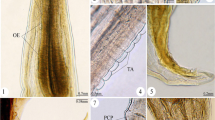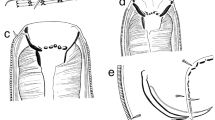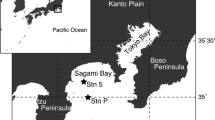Abstract
Nectonema, the only horsehair worm (Nematomorpha) genus found in marine environments, was previously known to be parasitic only in decapod crustaceans. We report Nectonema sp. as the first record of a marine nematomorph parasitic in isopod crustaceans. This is also the third record of marine nematomorphs from the North Pacific. Six infected isopods (Natatolana japonensis) collected from 1425 m of depth in the Sea of Japan each contained one to seven (mean 2.33) nematomorphs in the body cavity in the pereon. There was no correlation between the host body length and number of parasites. For Nectonema sp., we describe and illustrate morphological features of the parasitic juvenile stage and present nucleotide sequences for the cytochrome c oxidase subunit I gene (COI or cox1; 451 nt), 18S rRNA gene (1777 nt), and region spanning the internal transcribed spacer 1 (ITS1) and the 28S rRNA gene including the 5.8S rRNA gene and ITS2 (1218 nt in total). In an 18S maximum-likelihood tree that included 24 nematomorph species, Nectonema sp. grouped with N. agile from the northwestern Atlantic; the 18S gene from these two taxa was divergent by 11.8% K2P distance, suggesting that they are different species. Nectonema species may have a broader range of host groups than previously suspected, but may have been previously misidentified as nematode parasites.



Similar content being viewed by others
References
Bleidorn C, Schmidt-Rhaesa A, Garey JR (2002) Systematic relationships of Nematomorpha based on molecular and morphological data. Invertebr Biol 121:357–364
Bock S (1913) Zur Kenntnis von Nectonema und dessen systematischer Stellung. Zool Bidrag Uppsala 2:1–28
Brandt JF (1848) Vorläufige Bemerkungen über eine neue, eigenthümliche, der Fauna Russlands angehörige Gattung oder Untergattung von Krabben (Crustacea Brachyura) aus der Edwards’schen Abtheilung der Corysten. Bull Cl Phys Math Acad Imp Sci Saint-Pétersbourg 7:177–180
Brinkmann A (1930) Über Nectonema munidae n. sp. Bergen Mus Årbok 9:1–15
DDBJ (2021) DNA Data Bank of Japan. https://www.ddbj.nig.ac.jp/index.html. Accessed 14 Feb 2021
Hanelt B, Janovy J Jr (2004) Untying a Gordian knot: the domestication and laboratory maintenance of a Gordian worm, Paragordius varius (Nematomorpha: Gordiida). J Nat Hist 38:939–950
Homma R, Uyeno D, Kakui K (2020) Integrative taxonomy of Pseudolepeophtheirus longicauda (Crustacea: Copepoda: Caligidae) parasitic on Platichthys stellatus (Actinopterygii: Pleuronectidae). Parasitol Int 78:102135
Huus J (1932) Über die Begattung bei Nectonema munidae Br. und über den Fund der Larve von dieser Art. Zool Anz 97:33–37
Kakui K, Katoh T, Hiruta SF, Kobayashi N, Kajihara H (2011) Molecular systematics of Tanaidacea (Crustacea: Peracarida) based on 18S sequence data, with an amendment of suborder/superfamily-level classification. Zool Sci 28:749–757
Kakui K, Shimada D (2017) A new species of Tanaopsis (Crustacea: Tanaidacea) from Japan, with remarks on the functions of serial ridges and grooves on the appendages. Zootaxa 4282:324–336
Kanzaki N, Futai K (2002) A PCR primer set for determination of phylogenetic relationships of Bursaphelenchus species within the xylophilus group. Nematology 4:35–41
Kimura M (1980) A simple method for estimating evolutionary rates of base substitutions through comparative studies of nucleotide sequences. J Mol Evol 16:111–120
Kozlov AM, Darriba D, Flouri T, Morel B, Stamatakis A (2019) RAxML-NG: a fast, scalable, and user-friendly tool for maximum likelihood phylogenetic inference. Bioinformatics 35:4453–4455
Kumar S, Stecher G, Tamura K (2016) MEGA7: molecular evolutionary genetics analysis version 7.0 for bigger datasets. Mol Biol Evol 33:1870–1874
Nakayama T, Watanabe S, Mitsui K, Uchida H, Inouye I (1996) The phylogenetic relationship between the Chlamydomonadales and Chlorococcales inferred from 18SrDNA sequence data. Phycological Res 44:47–55
Nierstrasz HF (1907) Die Nematomorpha Der Siboga-Expedition. Siboga Exped 20:1–21
Oku Y, Fukumoto S, Ohbayashi M, Koike M (1983) A marine horsehair worm, Nectonema sp., parasitizing atelecyclid crab, Erimacrus isenbeckii, from Hokkaido, Japan. Jpn J Vet Res 31:65–69
Poinar G Jr, Brockerhoff AM (2001) Nectonema zealandica n. sp. (Nematomorpha: Nectonematoidea) parasitising the purple rock crab Hemigrapsus edwardsi (Brachyura: Decapoda) in New Zealand, with notes on the prevalence of infection and host defence reactions. Syst Parasitol 50:149–157
Rambaut A (2021) FigTree v1.4.4. http://tree.bio.ed.ac.uk/software/figtree/. Accessed 14 Feb 2021
Richardson H (1904) Contributions to the natural history of the Isopoda. Proc US Natl Mus 27:1–89
Saito H, Hasegawa K, Kogure Y, Yosho I, Ueda Y, Fujita T (2014) An outline of “Research on Deep-sea Fauna of the Sea of Japan, 2009–2013.” Natl Mus Nat Sci Monogr 44:1–22
Schmidt-Rhaesa A (1996) Ultrastructure of the anterior end in three ontogenetic stages of Nectonema munidae (Nematomorpha). Acta Zool 77:267–278
Schmidt-Rhaesa A (2005) Nematomorpha (horse-hair worms). In: Rohde K (ed) Marine parasitology. CSIRO Publishing, Collingwood, pp 213–216
Schmidt-Rhaesa A, Pohle G, Gaudette J, Burdett-Coutts V (2013) Lobster (Homarus americanus), a new host for marine horsehair worms (Nectonema agile, Nematomorpha). J Mar Biol Assoc UK 93:631–633
Thallwitz J (1891) Decapoden-Studien, insbesondere basirt auf A. B. Meyer’s Sammlungen im Ostindischen Archipel, nebst einer Aufzählung der Decapoden und Stomatopoden des Dresdener Museums. Abh Ber K Zool Anthr Ethn Mus Dresden 3:1–56
Tobias ZJC, Yadav AK, Schmidt-Rhaesa A, Poulin R (2017) Intra- and interspecific genetic diversity of New Zealand hairworms (Nematomorpha). Parasitology 144:1026–1040
Verrill AE (1879) Notice of recent additions to the marine Invertebrata, of the northeastern coast of America, with descriptions of new genera and species and critical remarks on others. Proc US Natl Mus 3:356–405
Yoder M, Tandingan de Ley I, King IW, Mundo-Ocampo M, Mann J, Blaxter M, Poiras L, de Ley P (2006) DESS: a versatile solution for preserving morphology and extractable DNA of nematodes. Nematology 8:367–376
Yoshida R (2016) Akkeshi wan nai ni okeru oogata koukakurui kisei seibutsu sou no haaku to bunruigakuteki kenkyu [Taxonomic study and faunal survey of parasites in large crustaceans in Akkeshi Bay]. http://akkeshi-bekanbeushi.com/josei/report/report_h27/03yoshida.pdf. Accessed 18 May 2021 [in Japanese]
Zhu X, Gasser RB, Podolska M, Chilton NB (1998) Characterisation of anisakid nematodes with zoonotic potential by nuclear ribosomal DNA sequences. Int J Parasitol 28:1911–1921
Acknowledgements
We thank Ken Fujimoto, Shiro Sawadaishi, and the crew of R/V Soyo-maru for collecting specimens and providing facilities; Matthew H. Dick for reviewing the manuscript and editing our English; and two anonymous reviewers for improving this manuscript with their comments.
Funding
This research did not receive any specific grant support from public, commercial, or non-profit funding agencies.
Author information
Authors and Affiliations
Contributions
KK conceived and designed the study, collected samples, and conducted the molecular analysis. JF identified the host isopods. KK and DS made morphological observations of the nematomorphs. DS made drawings. KK wrote the first draft of the manuscript, and all authors commented on the first draft and read and approved the final draft.
Corresponding author
Ethics declarations
Competing interests
The authors declare no competing interests.
Additional information
Section Editor: David Bruce Conn
Publisher's note
Springer Nature remains neutral with regard to jurisdictional claims in published maps and institutional affiliations.
Electronic supplementary material
Below is the link to the electronic supplementary material.
Rights and permissions
About this article
Cite this article
Kakui, K., Fukuchi, J. & Shimada, D. First report of marine horsehair worms (Nematomorpha: Nectonema) parasitic in isopod crustaceans. Parasitol Res 120, 2357–2362 (2021). https://doi.org/10.1007/s00436-021-07213-9
Received:
Accepted:
Published:
Issue Date:
DOI: https://doi.org/10.1007/s00436-021-07213-9




